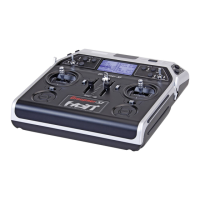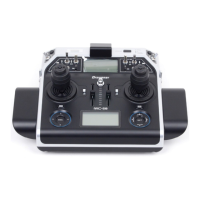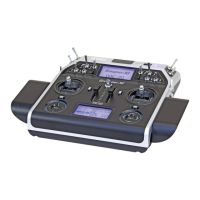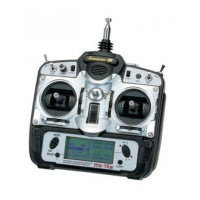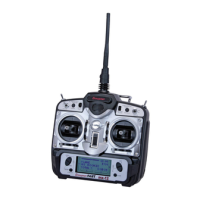102
Program description - Helicopter type
Helicopter type
Establishing helicopter model type
This option is available on both transmit-
ter types.
Use the selection keys on the left or
right four-way button to select the »Heli-
copter type« option in the multi-function menu:
Suppress models
Base setup model
Servo adjustment
Control adjust
Helicopter type
Stick mode
Open this menu option with a tap on the centre SET
key of the four-way button pad.
This “Model type” menu is used to establish the type of
model to be programmed. This also activates all char-
acteristic mixers, coupling functions, etc. in preparation
for subsequent programming of the specified model
type.
Swashplate type
Control of the swashplate will require an appropriate
program variant which corresponds to the number of
servos operating pitch control.
In the meantime this selection is also influenced by the
type of control exercised on swashplate servos. Since
Flybar systems generally do not require transmitter-side
swashplate mixers, when such a system is in use, “1
Servo” is generally to be selected as the swashplate
type, regardless of the actual number of swashplate
servos present.
In this context, be sure the Flybar system
complies with the included adjustment
instructions as otherwise there is a risk
the helicopter will not y.
When you open the »Helicopter type« menu the input
field of the “Swashplate type” line is generally already
framed (selected). If not, use the Select buttons
of the left or right-hand four-way button to move to the
“Swashplate type” line:
Linear. swashpl.
Swashplate
no
1 Servo
Rotor direct
right
Heli type
Pitch min. back
SEL
Briefly tap the centre SET key of the right four-way but-
ton. The current setting for number of pitch servos will
be displayed in inverse video. Now choose the variant
needed with the selection keys of the right four-way
button.
• “1 Servo“
A Flybar system is in use or the swashplate is
tipped with one servo each for roll and pitch-axis.
Pitch control will be affected by one separate servo.
(Since helicopter models, which are operated with
only 1 pitch servo, neither need any of the three
swashplate servos for pitch, pitch-axis and roll, like
Flybar systems, NOR the transmitter’s mixer func-
tions for pitch, pitch-axis and roll, the »Swash-
plate mixer« menu (page 216) option will be sup-
pressed in the Multi-function menu.)
2
• “2 Servo”
Two roll servos will displace the swashplate axially
to affect pitch control; nick control will be decoupled
by a mechanical compensation rocker.
• “3Sv(2Roll)”
Symmetric three-point control of the swashplate
with three, radially offset articulation points, each
offset by 120 °, connected to one pitch-axis ser-
vo (front or rear) and two roll servos (left and right).
All three servos push the swashplate axially to affect
pitch control.
• “3Sv (140°)”
3
1
2
Asymmetrical three-point control of the swashplate
is affected at three articulation points connected to
one nick servo (rear) and two roll servos (front left
and right). All three servos push the swashplate axi-
ally to affect pitch control.
2
1
3
1
2
mc
16 20

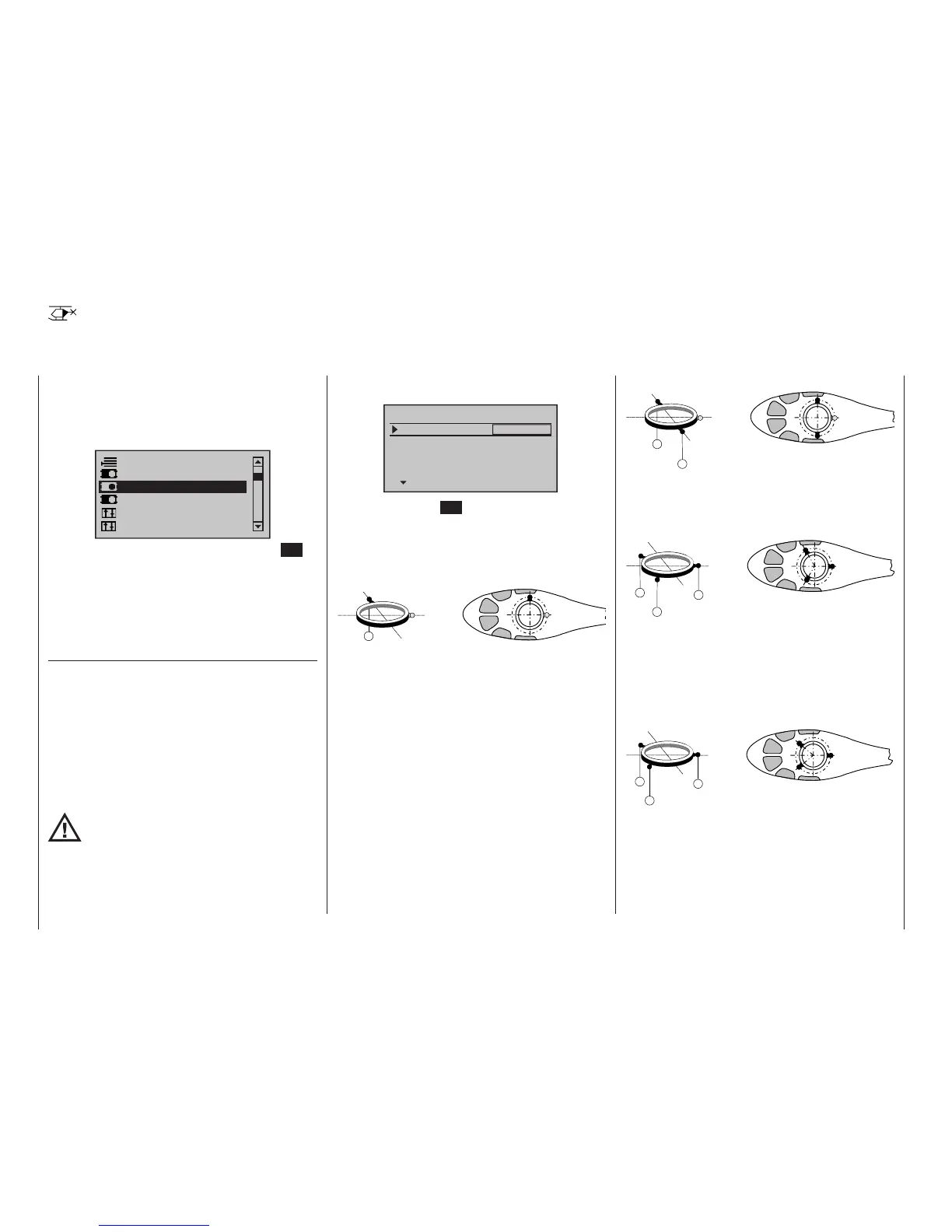